#Thomas Wieland
Text
Pentagon Pursuit | Part 41 | Huge Record Signing
#FM24 #PentagonPursuit Part 41: Huge Record Signing. Robaato Rasamu shells out £79m on a centre back and snaps up wonderkid midfielder Serhiy Mazurenko as he seeks to close the chasm between #VfBStuttgart and a relentless #FCBayern.
Read here:
VfB Stuttgart enjoyed a strong season but found themselves well short of a relentless Bayern, who’d now won 30 Bundesliga titles on the bounce. So Robaato Rasamu felt changes were needed to attempt to close the gap in his third season in Germany.
The best thing about managing in Germany was the huge finances available. Stuttgart began the 2042/43 campaign with £200m in the bank and a £90m…
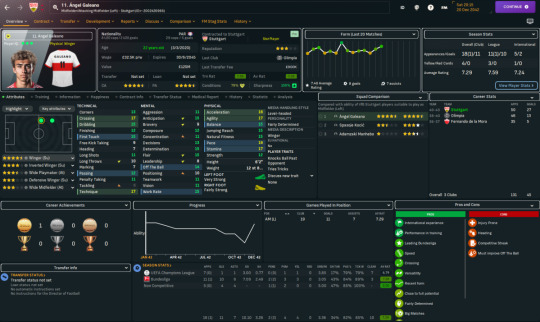
View On WordPress
#Armando Carrasco#Ángel Galeano#Brent Breukhoven#Bundesliga#Champions League#Dejan Vujicic#FM24#Football Manager#Football Manager 2024#Football Manager 24#Germany#Hashem Salari#Henrik Bek Hansen#Kenan Nuhic#Lars Haasnoot#Marcus Johannson#Milos Jorgic#Pentagon Challenge#Pentagon Pursuit#Ricardo Mendes#Robaato Rasamu#Serhiy Mazurenko#Spasoje Kocic#Stuttgart#Thomas Wieland#VfB Stuttgart
0 notes
Text
I’ve teased it. You’ve waited. I’ve procrastinated. You’ve probably forgotten all about it.
But now, finally, I’m here with my solarpunk resources masterpost!
YouTube Channels:
Andrewism
The Solarpunk Scene
Solarpunk Life
Solarpunk Station
Our Changing Climate
Podcasts:
The Joy Report
How To Save A Planet
Demand Utopia
Solarpunk Presents
Outrage and Optimisim
From What If To What Next
Solarpunk Now
Idealistically
The Extinction Rebellion Podcast
The Landworkers' Radio
Wilder
What Could Possibly Go Right?
Frontiers of Commoning
The War on Cars
The Rewild Podcast
Books (Fiction):
Ursula K. Le Guin: The Left Hand of Darkness The Dispossessed The Word for World is Forest
Becky Chambers: A Psalm for the Wild-Built A Prayer for the Crown-Shy
Phoebe Wagner: When We Hold Each Other Up
Phoebe Wagner, Bronte Christopher Wieland: Sunvault: Stories of Solarpunk and Eco-Speculation
Brenda J. Pierson: Wings of Renewal: A Solarpunk Dragon Anthology
Gerson Lodi-Ribeiro: Solarpunk: Ecological and Fantastical Stories in a Sustainable World
Justine Norton-Kertson: Bioluminescent: A Lunarpunk Anthology
Sim Kern: The Free People’s Village
Ruthanna Emrys: A Half-Built Garden
Sarina Ulibarri: Glass & Gardens
Books (Non-fiction):
Murray Bookchin: The Ecology of Freedom
George Monbiot: Feral
Miles Olson: Unlearn, Rewild
Mark Shepard: Restoration Agriculture
Kristin Ohlson: The Soil Will Save Us
Rowan Hooper: How To Spend A Trillion Dollars
Anna Lowenhaupt Tsing: The Mushroom At The End of The World
Kimberly Nicholas: Under The Sky We Make
Robin Wall Kimmerer: Braiding Sweetgrass
David Miller: Solved
Ayana Johnson, Katharine Wilkinson: All We Can Save
Jonathan Safran Foer: We Are The Weather
Colin Tudge: Six Steps Back To The Land
Edward Wilson: Half-Earth
Natalie Fee: How To Save The World For Free
Kaden Hogan: Humans of Climate Change
Rebecca Huntley: How To Talk About Climate Change In A Way That Makes A Difference
Christiana Figueres, Tom Rivett-Carnac: The Future We Choose
Jonathon Porritt: Hope In Hell
Paul Hawken: Regeneration
Mark Maslin: How To Save Our Planet
Katherine Hayhoe: Saving Us
Jimmy Dunson: Building Power While The Lights Are Out
Paul Raekstad, Sofa Saio Gradin: Prefigurative Politics
Andreas Malm: How To Blow Up A Pipeline
Phoebe Wagner, Bronte Christopher Wieland: Almanac For The Anthropocene
Chris Turner: How To Be A Climate Optimist
William MacAskill: What We Owe To The Future
Mikaela Loach: It's Not That Radical
Miles Richardson: Reconnection
David Harvey: Spaces of Hope Rebel Cities
Eric Holthaus: The Future Earth
Zahra Biabani: Climate Optimism
David Ehrenfeld: Becoming Good Ancestors
Stephen Gliessman: Agroecology
Chris Carlsson: Nowtopia
Jon Alexander: Citizens
Leah Thomas: The Intersectional Environmentalist
Greta Thunberg: The Climate Book
Jen Bendell, Rupert Read: Deep Adaptation
Seth Godin: The Carbon Almanac
Jane Goodall: The Book of Hope
Vandana Shiva: Agroecology and Regenerative Agriculture
Amitav Ghosh: The Great Derangement
Minouche Shafik: What We Owe To Each Other
Dieter Helm: Net Zero
Chris Goodall: What We Need To Do Now
Aldo Leopold: A Sand County Almanac
Jeffrey Jerome Cohen, Stephanie Foote: The Cambridge Companion To The Environmental Humanities
Bella Lack: The Children of The Anthropocene
Hannah Ritchie: Not The End of The World
Chris Turner: How To Be A Climate Optimist
Kim Stanley Robinson: Ministry For The Future
Fiona Mathews, Tim Kendall: Black Ops & Beaver Bombing
Jeff Goodell: The Water Will Come
Lynne Jones: Sorry For The Inconvenience But This Is An Emergency
Helen Crist: Abundant Earth
Sam Bentley: Good News, Planet Earth!
Timothy Beal: When Time Is Short
Andrew Boyd: I Want A Better Catastrophe
Kristen R. Ghodsee: Everyday Utopia
Elizabeth Cripps: What Climate Justice Means & Why We Should Care
Kylie Flanagan: Climate Resilience
Chris Johnstone, Joanna Macy: Active Hope
Mark Engler: This is an Uprising
Anne Therese Gennari: The Climate Optimist Handbook
Magazines:
Solarpunk Magazine
Positive News
Resurgence & Ecologist
Ethical Consumer
Films (Fiction):
How To Blow Up A Pipeline
The End We Start From
Woman At War
Black Panther
Star Trek
Tomorrowland
Films (Documentary):
2040: How We Can Save The Planet
The People vs Big Oil
Wild Isles
The Boy Who Harnessed The Wind
Generation Green New Deal
Video Games:
Terra Nil
Animal Crossing
Gilded Shadows
Anno 2070
Stardew Valley
RPGs:
Solarpunk Futures
Perfect Storm
Advocacy Groups:
A22 Network
Extinction Rebellion
Greenpeace
Friends of The Earth
Apps:
Ethy
Sojo
BackMarket
Depop
Vinted
Olio
Buy Nothing
Too Good To Go
Websites:
European Co-housing
UK Co-housing
US Co-housing
Brought By Bike (connects you with zero-carbon delivery goods)
ClimateBase (find a sustainable career)
Environmentjob (ditto)
Businesses (🤢):
Ethical Superstore
Hodmedods
Fairtransport/Sail Cargo Alliance
Let me know if you think there’s anything I’ve missed!
#solarpunk#hopepunk#cottagepunk#environmentalism#social justice#community#optimism#bright future#climate justice#tidalpunk#turbinepunk#resources#masterpost#books#films#magazines#podcasts#apps
397 notes
·
View notes
Text
The Plan so far
So, this blog was a very spontaneous idea I had yesterday (very late in the evening). So I took some time to think it through today, as well as get some more lists from other Fanders.
The plan now is to first create lists for the separate facets of the Thomas Sanders fandom, i.e. Sanders Sides, Shorts Characters, Cartoon Therapy and Roleslaying with Roman. (I'm sorry that this means I need to split up Remy and Emile for now, we'll get to crossovers later.)
For that to work, I need a comprehensive list of characters first. So this is my call for your help! I'll put a list of who I got so far after the cut and you can reply to this post or send me an ask about more characters I can/should include!
I'm really happy with the positive reactions I got for creating this blog, thank you for your support! 💗💙💖💙💜💛💚
Sanders Sides:
Patton
Roman
Logan
Virgil
Janus
Remus
Orange
Thomas
Nico
King
Dragon Witch (unsure if I should include her but if I do, this is where she'll be)
I know King is most commonly used as a sort of fusion of Roman and Remus but for the purposes of this list, I will see him as an entirely separate character and as such include ships between him and Roman and/or Remus.
Shorts Characters
Remy - Sleep
Teal/Teagan - Teacher
Dayd - Dad
Pryce - Prince
Andy - Anxiety
Dice/Anton/Cedric - The Critic
Linda - Thomas' Cowlick
Missy - Misleading Compliments
Nathan - Crimefighter Dude
Detective Sanders (from this series which I found through this post by @loganslowdown4!)
Percy/Magenta - Printer
Harley/Hart - Heart
Immy - Immune System
Brian - Brain
Dean - Denial
Sabina - Spam Bot
Ishmael - Ice Machine
Jasper - GPS
Scot - Scam Likely
Wieland - WIP
Phaelan - Phone
Fane - Fan
Steven - Electric Stapler
Ace - Action Hero that can't catch things
Rian - Rain
Mike - Microwave
Nessy - Illness
Apollo - Sun
Jericho - Moon
Taz / Tucker - Task
Bouce/Boucy - The Bouncing Ball
Anton - Antagonist
Pranks - Disney/Pokémon Pranks
Asher/Rudolph - Christmas
Jasper - Thanksgiving
Months
Jaana - January
Fabian - Feburary
Mara - March
April - April
May - May
Junie - June
Julia/Julian - July
Augusta/Augustus - August
Seth/Ember - September
Toby - October
Nove - November
Demetri/Odessa - December
Zodiacs
Ariel/Ari - Aries
Leona/Leonard/Leo - Leo
Candace/Candy - Cancer
Phillipa/Pip/Pippy - Pisces
Schuyler/Sky - Scorpio
Tara - Taurus
Sarah/Sally - Sagittarius
Caprice - Capricorn
Gemma - Gemini
Virginia/Ginny - Virgo
Liberty/Libby - Libra
Quinn - Aquarius
Cartoon Therapy (as far as I know, all the characters in this series are adults)
Emile Picani
Elliot
Mitchel (I don't actually know if that's how you spell his name)
Dot
Larry
Sloane
Corbin
Kai
Lauren
Sam
Roleslaying with Roman
Roman of Reston
Youngblood
Noise
??? (Mike)
Flow
Britney
Djembe
Bob Normie
Criss
Cross
Mother
Bard King
Ryker
There are many more characters in the series of course, but I do not know which it makes sense to include here, so please let me know! Also if there is another part of the fandom I forgot to include entirely.
#thomas sanders#thomas sanders fandom#sanders sides#thomas sanders shorts#cartoon therapy#roleslaying with roman
16 notes
·
View notes
Text
Deutschribing Germany
Literature
Middle Ages (5th-15th centuries)
Medieval German literature can be divided into two periods: Old High German literature (8th-11th centuries) and Middle High German literature (12th-14th centuries). The only surviving works from the first period are the Hildebrandslied (Lay of Hildebrand), which is the earliest poetic text in German and tells of the tragic encounter in battle between a father and a son, and Muspilli, which deals with the fate of the soul after death and at the Last Judgment.

Middle High German literature saw a 60-year golden age known as mittelhochdeutsche Blütezeit, in which lyric poetry in the form of Minnesang—the German version of courtly love—blossomed thanks to poets such as Walther von der Vogelweide and Wolfram von Eschenbach. Another important genre during this time was epic poetry, of which the most famous example is the Nibelungenlied (The Song of the Nibelungs), which narrates the story of prince Siegfried and princess Kriemhild, among other characters.
Renaissance (15th-16th centuries)
Early New High German literature includes works such as Der Ring (The Ring) by Heinrich Wittenwiler, a 9,699-line satirical poem where each line is marked with red or green ink depending on the seriousness of the material, and Das Narrenschiff (Ship of Fools) by Sebastian Brant, a satirical allegory that contains the ship of fools trope.
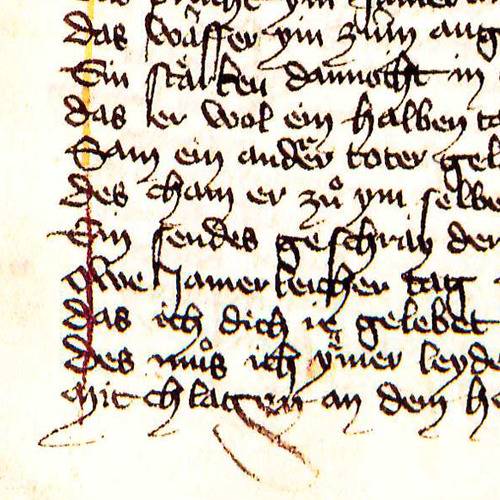
Other important authors are satirist and poet Thomas Murner, humanist Sebastian Franck, and poets Johannes von Tepl and Oswald von Wolkenstein.
Baroque (16th-17th centuries)
The Baroque period is characterized by works that reflected the experiences of the Thirty Years’ War and tragedies (Trauerspiele) on Classical themes, the latter were written by authors such as Andreas Gryphius and Daniel Caspar von Lohenstein. The most famous work is Der abenteuerliche Simplicissimus (Simplicius Simplicissimus) by Hans Jakob Christoffel von Grimmelshausen, a picaresque novel that narrates the adventures of the naïve Simplicissimus.
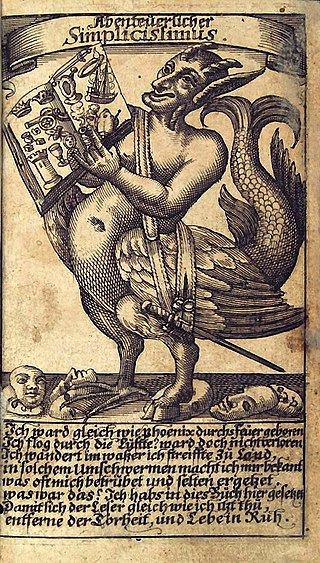
Enlightenment (17th-18th centuries)
The most important writers of the Enlightenment are Christian Felix Weiße, Christoph Martin Wieland, Gotthold Ephraim Lessing, and Johann Gottfried Herder.
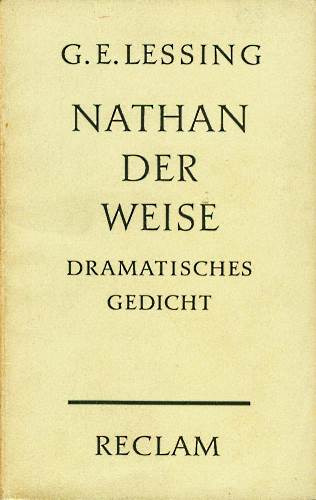
The Age of Reason saw the emergence of two literary movements: Empfindsamkeit (sentimental style) and Sturm und Drang (storm and stress). The first one intended to express true and natural feelings and featured sudden mood changes. The latter movement was characterized by individual subjectivity and extremes of emotion in response to the rationalism imposed by the Enlightenment.
Weimar Classicism (18th-19th centuries)
The main drivers behind Weimar Classicism, which synthesized ideas from Classicism, the Enlightenment, and Romanticism, were Johann Christoph Friedrich von Schiller, and Johann Wolfgang von Goethe.
During this period, Schiller published Die Bürgschaft (The Pledge), a ballad based on the legend of Damon and Pythias found in the Latin Fabulae, and Don Karlos (Don Carlos), a historical tragedy about Carlos, Prince of Asturias, while Goethe wrote Egmont, a play heavily influenced by Shakespearean tragedy, and Faust, a tragic play in which the main character sells his soul to the devil that is considered the greatest work of German literature.
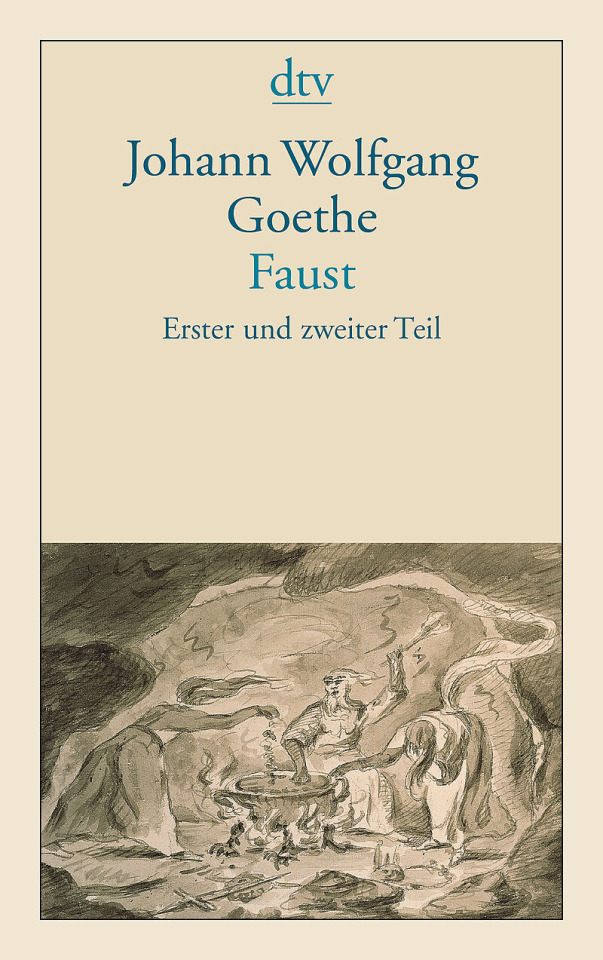
Romanticism (18th-19th centuries)
Important Romantic writers include E. T. A. Hoffmann, author of Der Sandmann (The Sandman), a short story based on the mythical character of said name that puts people to sleep by sprinkling sand on their eyes; Heinrich von Kleist, who wrote Das Kätchen von Heilbronn (The Little Catherine of Heilbronn), a drama set in Swabia in the Middle Ages; Joseph Freiherr von Eichendorff, author of Das Marmorbild (The Marble Statue), a novella about a man who struggles to choose between piety and a world of art, and Novalis, author of Hymnen an die Nacht (Hymns to the Night), a collection of six poems.

Folk tales collected by the Brothers Grimm became very popular during the Romantic period, as they represented a pure form of national literature and culture.
Biedermeier and Young Germany (19th century)
The Biedermeier period contrasts with the Romantic era and is best exemplified by poets Adelbert von Chamisso, Annette von Droste-Hülshoff, and Wilhelm Müller.
Young Germany was a youth movement whose main proponents were Karl Gutzkow, Ludolf Wienbarg, and Theodor Mundt.
Realism and Naturalism (19th century)
The most representatives realist authors are Gustav Freytag, Theodor Fontane, and Theodor Storm, while Gerhart Hauptmann was the most important naturalist writer.
Weimar literature (20th century)
During the Weimar Republic, writers such as Erich Maria Remarque, Heinrich Mann, and Thomas Mann presented a bleak look at the world and the failure of politics and society.

Expressionism (20th century)
As a modernist movement, Expressionism presented the world solely from a subjective perspective, distorting it for emotional effect. Famous authors include novelists Alfred Döblin and Franz Kafka, playwrights Ernst Toller and Georg Kaiser, and poets August Stramm and Else Lasker-Schüler.

Neue Sachlichkeit (20th century)
Neue Sachlichkeit (New Objectivity) arose as a reaction against expressionism and was characterized by its political perspective on reality and portrayal of dystopias in an emotionless reporting style, showing cynicism about humanity. Authors associated with this movement include Erich Kästner, Hans Fallada, and Irmgard Keun.
Nazi Germany (1933-1945)
During the Nazi regime, some authors went into exile, while others submitted to censorship. The former, who either were of Jewish ancestry or opposed the regime for political reasons, include writers Alice Rühle-Gerstel and Anna Seghers, playwright Bertolt Brecht, and poet and novelist Hermann Hesse/Emil Sinclair.
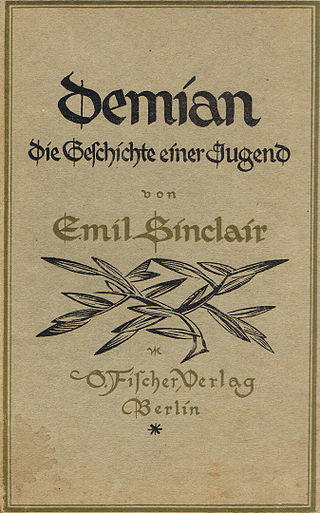
Those who stayed and engaged in inner emigration include writer Friedrich Reck-Malleczewen, poet and essayist Gottfried Benn, writer Hans Blüher, and poet and novelist Ricarda Huch.
Post-war literature (20th century)
The most famous authors in West Germany were Edgar Hilsenrath, Günter Grass, Heinrich Böll, and Group 47, a group of participants in writers’ meetings invited by Hans Werner Richter.
East German writers include Christa Wolf, Heiner Müller, Reiner Kunze, and Sarah Kirsch.
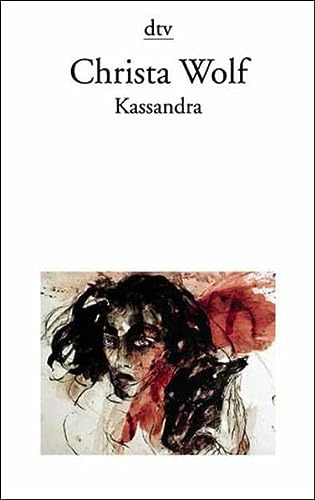
Contemporary literature (21st century)
Fantasy and science fiction authors include Andreas Eschbach, Frank Schätzing, and Wolfgang Hohlbein. Some of the most important poets are Aldona Gustas, Hans Magnus Enzensberger, and Jürgen Becker. Thriller is best represented by Ingrid Noll. Fiction novelists include Herta Müller, Siegfried Lenz, and Wilhelm Genazino.
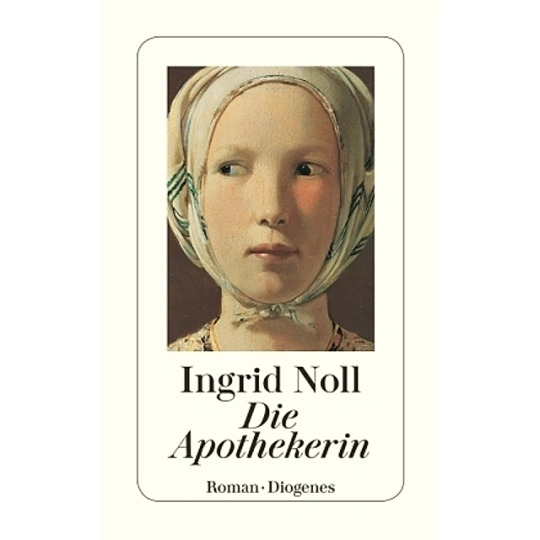
20 notes
·
View notes
Photo


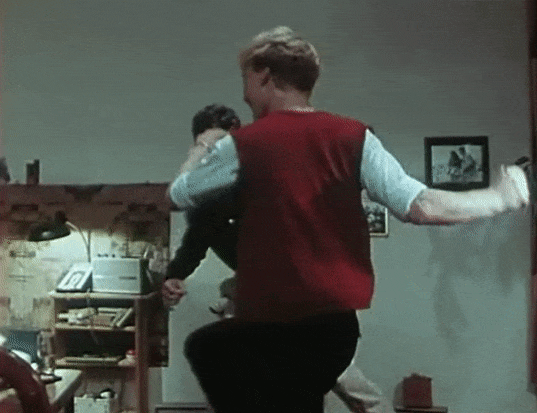
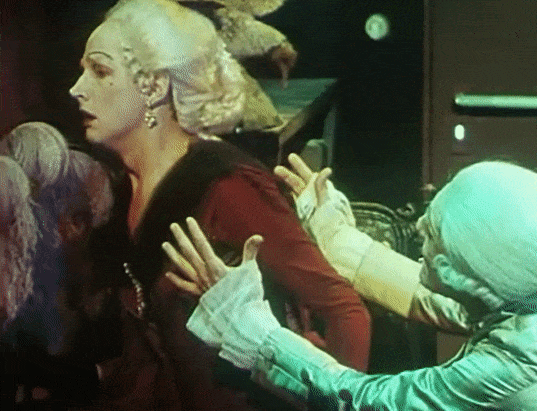

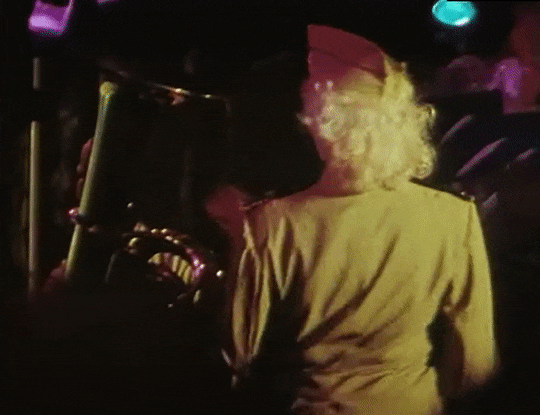
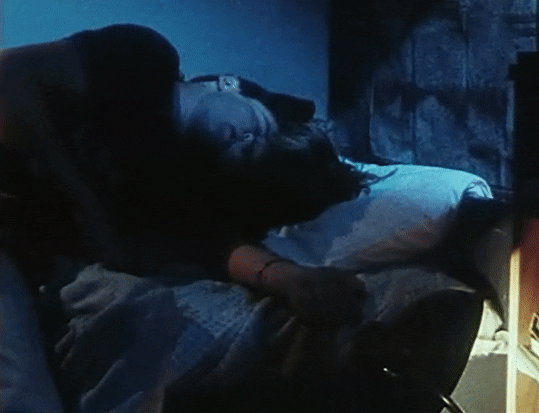
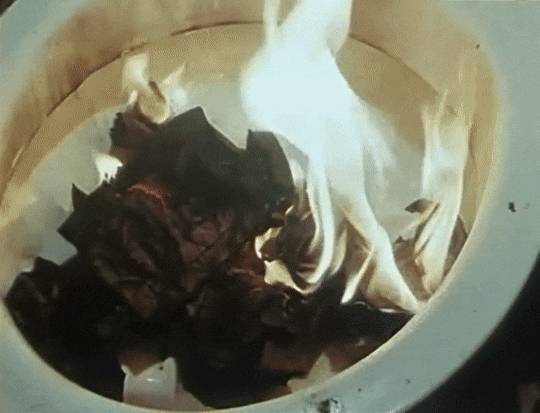


WESTLER (1985)
dir. Wieland Speck
Felix from West-Berlin falls in love with Thomas in East-Berlin. At first they keep their relationship going by regular visits from Felix, but the curfew forces him to return every evening. When the East-German authorities become suspicious, Thomas decides to try and flee to the West.
(link in title)
#lgbt cinema#gay cinema#westler#westler 1985#german cinema#lgbt#gay#germany#lgbt film#gay film#german film#lgbt movie#gay movies#german movies#lgbt media#gay media#queer cinema#european cinema#sigurd rachman#rainer strecker#1985#80s#1980s#80s cinema#80s films#1980s cinema#1980s movies#1980s film
102 notes
·
View notes
Note
do you have any book recs?
ofc! these’ll be pretty general, but they’re all books i’ll recommend to basically anyone. for nonfiction and theory:
thomas nail, marx in motion (reading marx through new materialism. especially recommend ch. 1, 3, and 5)
henri lefebvre, writings on cities (it’s poetic praxis babes. always obsessed with this tbh)
karl marx, early writings (from penguin classics—i find this a lot more approachable and clear than capital)
jon levenson, sinai and zion (this book made me become a religious studies major, and it’s an incredibly clear and insightful look at early judaism. i personally found it really affecting)
georges bataille, erotism (duh)
for fiction (these are just my favorite books of all time lol):
matthew gregory lewis, the monk (this is the subject of my thesis so im a little biased)
t.h. white, the once and future king (funny and heartfelt and it makes me cry)
c.s. lewis, the screwtape letters (not to overstate things but this is one of the central works of contemporary christian thought. to ME)
charles brockden brown, wieland (seminal text of the american gothic my beloved)
chuck palahniuk, choke (ive said this before but people read this way less frequently than fight club or invisible monsters and i love it)
patricia grace, potiki (holy shit this book is so good)
#literature#asks#anon#book recommendations#no poetry recs rn because i just read SO MUCH susan howe and i am totally and wholly burned out on the genre. sorry.#ty for the ask!! i always love talking about books :)#hope you find something good!#also btw i cant italicize any of the titles since im on mobile browser and it's driving me nuts#:( might come back and do it later :(
9 notes
·
View notes
Text
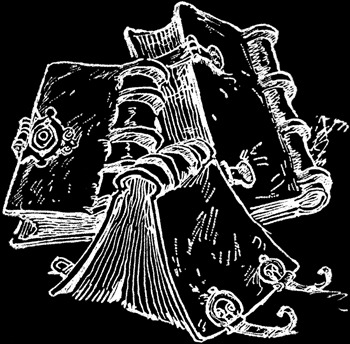
Bevor jetzt auch noch die Urlaublektüre hinterherhinkt, hier noch schnell die total literarische Leseliste.
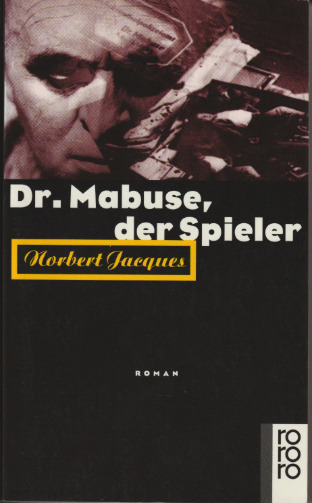
Die literarische Vorlage. Wie der Film ist sie recht reißerisch, und spielt statt im irgendwie angenommenen Berlin überraschenderweise über weite Strecken in München (ist für Schmuggeltätigkeiten über den Bodensee auch viel praktischer).

Die literarische Nachbereitung. Will Self imitiert einen bekannten Roman von Oscar Wilde. Es sind die 1980, mit AIDS (sonderbar viele AIDS-Dramen gerade...), hemmungslosem Drogenkonsum und Prinzessin Diana. Der attraktive, aber zügellose und unmoralische Dorian Gray scheint nicht zu altern, stattdessen altert die Videoinstallation, die sein Künstlerfreund Basil von ihm geschaffen hat.....

Der literarische Politikunterricht. Der gute Herr Wieland hält den Regierenden -als verschachtelte und mit diversen Meta-Übersetzung-Ebenen (aus dem scheschianischen) Erzählung aus einem fernen Märchenland mit Sultan, Philosoph und natürlich Haremdsdamen- einen goldnen Spiegel vor. Es hat sich offensichtlich in den 250 Jahren seither wenig am Konzept der wohlmeinenden, aber trotzdem die Zustände nur verschlimmernden Regierung geändert, so daß man es eigentlich immer noch hervorragend verwenden kann.

Die literarische Feierstunde von John Waters. Die Freuden der Jugend, das hatte ich hier schon angekündigt, wollte ich nochmal im O-Ton lesen (da hatte ich lustigerweise auch einen Wieland direkt davor). Vielleicht gibt es ja keinen besseren Roman auf der Welt.

Das literarische und popkulturelle Suchspiel in der bewährt süchtigmachenden Kim-Newman-Manier. In den Katakomben unter der Paris Oper betreibt Erik, bekannt als das Phantom derselben eine kleine Agentur, die sich um Ermittlungen und gelegentliche Auftragsmorde für Fälle, in denen die Polizei lieber nicht eingeschaltet wird kümmert. Ausführendes Organ sind -ähnlich funktionierend wie später bei Charlie- immer drei Engel der Musik, die ersten sind (natürlich) Christine Daaé, Trilby O'Ferrall und die bewährte Irene Adler, dazu kommen immer neue aus den Höchst- und Tiefstunterhaltungen, in denen sich Mr. Newman so schön auskennt, besonders freuten mich natürlich die Imitationskünstlerin Mrs. Eynsford-Hill und Gilberte Lachaille, nur Sibyl Vane, die englische Schauspielerin, die gerade erst drei Bücher zuvor als Strichjunge Herman auftauchte, war kein rechter Erfolg.
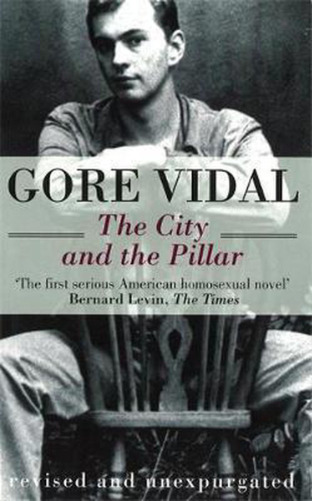
Das gefeierte literarische Wunderkind befand, in seinem dritten Roman sei es mal Zeit, sich Gedanken über seine unaufgeregt selbstverständliche Homosexualität zu machen, und sorgte damit natürlich doch für einige Aufregung. Obwohl es im Vergleich mit Myra Breckinridge noch geradezu gediegen wirkt. Und nur so ein mittelgutes Ende nimmt. Thomas Mann immerhin befand, es sei ein edles Werk.
#Buch gelesen#Norbert Jacques#Dr. Mabuse der Spieler#Will Self#Dorian#Christoph Martin Wieland#Der goldne Spiegel#Denton Welch#In Youth is Pleasure#Kim Newman#Angels of Music#Gore Vidal#The City and the Pillar#Oscar Wilde#The Picture of Dorian Gray#Gaston Leroux#The Phantom of the Opera
6 notes
·
View notes
Text
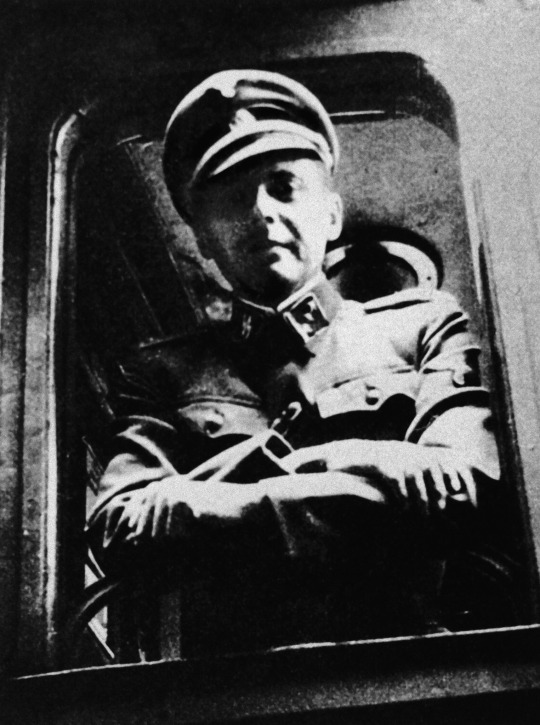
“The moment has come to make good a promise I gave. I must substantiate why, according to my firm conviction, torture was the essence of National Socialism - more accurately stated, why it was precisely in torture that the Third Reich materialized in all the density of its being. That torture was, and is, practiced elsewhere has already been dealt with. Certainly. In Vietnam since 1964. Algeria 1957. Russia probably between 1919 and 1953. In Hungary in 1919 the Whites and the Reds tortured. There was torture in Spanish prisons by the Falangists as well as the Republicans. Torturers were at work in the semifascist Eastern European states of the period between the two World Wars, in Poland, Romania, Yugoslavia. Torture was no invention of National Socialism. But it was its apotheosis. The Hitler vassal did not yet achieve his full identity if he was merely as quick as a weasel, tough as leather, hard as Krupp steel. No Golden Party Badge made of him a fully valid representative of the Führer and his ideology, nor did any Blood Order or Iron Cross. He had to torture, destroy, in order to be great in bearing the suffering of others. He had to be capable of handling torture instruments, so that Himmler would assure him his Certificate of Maturity in History; later generations would admire him for having obliterated his feelings of mercy.
Again I hear indignant objection being raised, hear it said that not Hitler embodied torture, but rather something unclear, "totalitarianism." I hear especially the example of Communism being shouted at me. And didn't I myself just say that in the Soviet Union torture was practiced for thirty-four years? And did not already Arthur Koestler . . . ? Oh yes, I know, I know. It is impossible to discuss here in detail the political "Operation Bewilderment" of the postwar period, which defined Communism and National Socialism for us as two not even very different manifestations of one and the same thing. Until it came out of our ears, Hitler and Stalin, Auschwitz, Siberia, the Warsaw Ghetto Wall and the Berlin Ulbricht-Wall were named together, like Goethe and Schiller, Klopstock and Wieland. As a hint, allow me to repeat here in my own name and at the risk of being denounced what Thomas Mann once said in a much attacked interview: namely, that no matter how terrible Communism may at times appear, it still symbolizes an idea of man, whereas Hitler-Fascism was not an idea at all, but depravity. Finally, it is undeniable that Communism could de-Stalinize itself and that today in the Soviet sphere of influence, if we can place trust in concurring reports, torture is no longer practiced. In Hungary a Party First Secretary can preside who was himself once the victim of Stalinist torture. But who is really able to imagine a de-Hitlerized National Socialism and, as a leading politician of a newly ordered Europe, a Röhm follower who in those days had been dragged through torture? No one can imagine it. It would have been impossible. For National Socialism - which, to be sure, could not claim a single idea, but did possess a whole arsenal of confused, crackbrained notions - was the only political system of this century that up to this point had not only practiced the rule of the antiman, as had other Red and White terror regimes also, but had expressly established it as a principle. It hated the word "humanity" like the pious man hates sin, and that is why it spoke of "sentimental humanitarianism." It exterminated and enslaved. This is evidenced not only by the corpora delicti, but also by a sufficient number of theoretical confrmations. The Nazis tortured, as did others, because by means of torture they wanted to obtain information important for national policy. But in addition they tortured with the good conscience of depravity. They martyred their prisoners for definite purposes, which in each instance were exactly specified. Above all, however, they tortured because they were torturers. They placed torture in their service. But even more fervently they were its servants.” - Jean Améry, ‘At the Mind's Limits: Contemplations by a Survivor on Auschwitz and Its Realities’ (1966) [pages 30, 31]
#amery#améry#jean amery#jean améry#at the mind’s limits#third reich#wwii#holocaust#torture#fascism#hitler#mengele
6 notes
·
View notes
Text
"Greed is cruelty against human-beings in need, luxuria aswell."
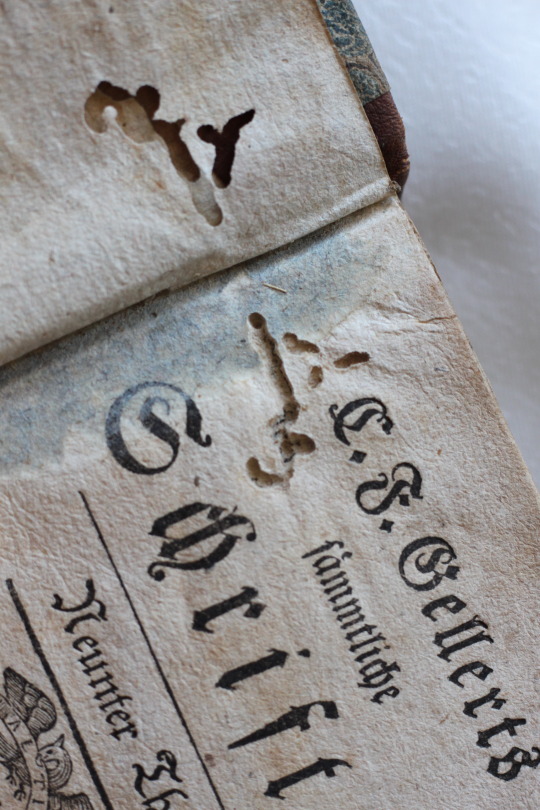


"Die Himmelrühmen des Ewigen Ehre, der Schall pflanzt seinen Namen fort."
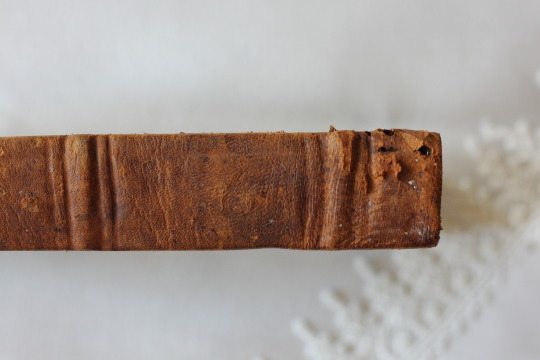
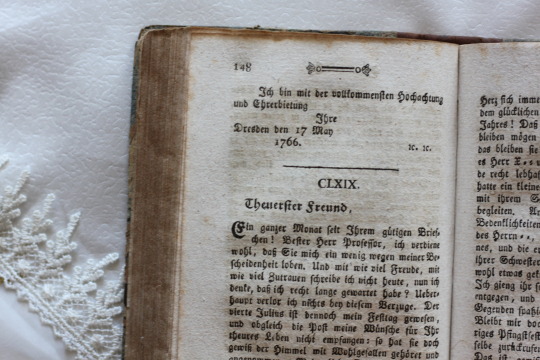


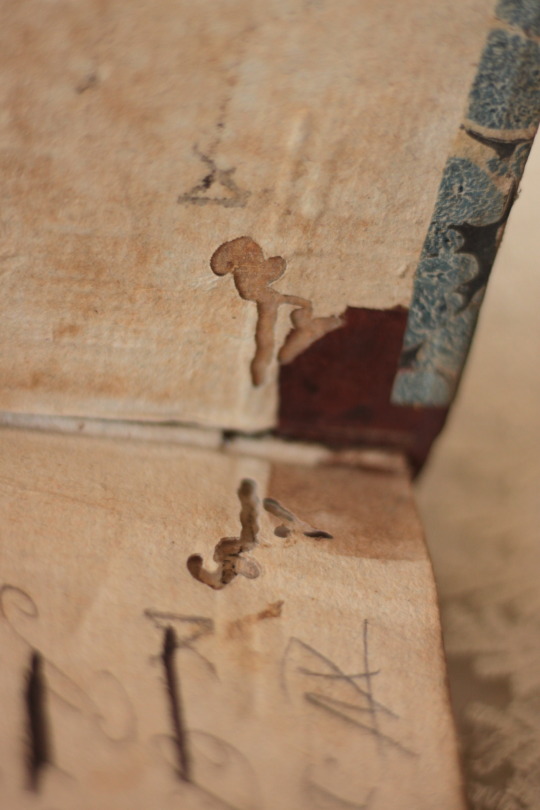
"Real glory is fame in front of God, not in front of sons of men."

"The real calmness of mind is virtue and modesty."


Christian Fürchtegott Gellert, published and printed 1790 by Thomas von Trattern. This edition is a collection of selected letters, several wormholes are decorating this book.
Presenting Christian Fürchtegott Gellert - Moral philosopher, poet of Enlightment, narrator of fables and valued for his clear and prosaic style.
The first time I read from him in praisings of my beloved Wieland & Lessing and later read of the correspondence with C. K. Schlegel.
In the Transition Epoch of so many wonderful genre of literature, Gellert is one of the most read writers.
The printing procedure is also very interesting and highlighting the problems of censorship in the Holy Roman Empire of the German Nation at that time. Throughout human history books were be banned, because of (political) content.
In Habsburg Royal Hungary Thomas von Trattern could not only elude censorship, but also print cost-effective, so that even famous poets and writers
(Goethe, Schiller, Herder, Lessing, Wieland, Gellert ...)
could be re-printed and were therefore more accessable to the public.
The current legal situation in Austria allowed a freer form of expression, but Thomas von Trattern saw himself walled in hostility by German printing offices, especially by Grant Printers of Leipzig (cf. Philipp Erasmus Reich).
It is a huge luck that so many great books survived censorship and withstand over different political systems. It is hard enough, that so many works are lost or just passed on in extract...
After prayers, books are my favourite medium of conversation.
It gives me the strenght to survive the life, words are soothing balm, I lacked consulation throughout my childhood. I am so thankfull, that I can read and escape from physical circumstances and transcend into eternal fields.
"Der, den der Tod nicht weiser macht, hat nie ihm Ernst an ihn gedacht."
#Antiquarian book#book#German philosopher#philosophy of enlightment#bookworm#wormholes#Christian Fürchtegott Gellert#1790#Thomas von Trattnern#Johann Thomas Edlen von Trattnern#history of book printing#censorship of books#freedom of expression#freedom#God_is_Love
1 note
·
View note
Text
1 note
·
View note
Text
Reivindicación: Jim Thorpe, campeón olímpico del penta y deca 1912

Por STEVE WILSON / W.A.
Más de un siglo después, el gran atleta nativo americano Jim Thorpe ha sido reincorporado como el único campeón de los eventos de pentatlón y decatlón en los Juegos Olímpicos de Estocolmo de 1912.
El Comité Olímpico Internacional anunció hoy (15) que Thorpe sería reconocido como el único medallista de oro, en lugar de co-ganador, de ambos eventos multidisciplinarios. La decisión se tomó en el 110 aniversario de la victoria de Thorpe en el decatlón.
Thorpe, un miembro de Sac and Fox Nation que nació Wa-tho-huck, o Bright Path, ganó ambos eventos en Estocolmo de manera dominante. El rey Gustavo V de Suecia le entregó las medallas de oro y le dijo: “Usted, señor, es el atleta más grande del mundo”. Thorpe respondió: "Gracias, rey".
Pero, unos meses más tarde, en 1913, Thorpe fue despojado de las medallas y eliminado de los libros de récords después de que se revelara que anteriormente había jugado béisbol de ligas menores, una violación de las estrictas reglas de amateurismo de la época.
Si bien el COI restauró las victorias de Thorpe y entregó réplicas de medallas póstumamente a su familia en 1983, solo lo reconoció como co-ganador de los eventos, dejando que sus títulos se compartieran con los dos atletas que habían sido elevados al primer lugar después de su descalificación.
Ahora, Thorpe figurará como el único medallista de oro, mientras que Ferdinand Bie de Noruega (pentatlón) y Hugo Wielander de Suecia (decatlón) pasarán a las medallas de plata. James Donahue de los Estados Unidos y Frank Lukeman de Canadá mantendrán las medallas de plata y bronce que recibieron cuando se modificaron los resultados en 1913. Lo mismo se aplicará a los suecos Charles Lomberg (plata) y Gosta Holmer (bronce) en el decatlón.
La medida se produjo después de una campaña del grupo de defensa Bright Path, con el apoyo de Anita DeFrantz, miembro senior del COI de EE. UU., para enmendarse por completo al coronar a Thorpe como el campeón absoluto en ambos eventos. En un artículo de opinión en el Washington Post el año pasado, DeFrantz describió la descalificación de Thorpe como "uno de los errores judiciales más atroces en la historia del deporte" y "un episodio doloroso de intolerancia de principios del siglo XX".
“Agradecemos el hecho de que, gracias al gran compromiso de Bright Path Strong, se haya podido encontrar una solución”, dijo el presidente del COI, Thomas Bach. “Esta es una situación excepcional y única, que ha sido abordada con un extraordinario gesto de juego limpio por parte de los Comités Olímpicos Nacionales involucrados”.
En julio del año pasado, Thorpe recibiói la plaqueta del Patrimonio Mundial del Atletismo en la categoría póstuma de Leyenda.
La placa se inauguró este año en el estadio olímpico de Estocolmo y permanecerá en exhibición pública permanente.
Thorpe fue una estrella legendaria de todos los deportes en la Escuela Industrial India de Carlisle en Carlisle, Pensilvania, sobresaliendo en fútbol y atletismo.
En Estocolmo, ganó fácilmente el pentatlón al terminar primero en cuatro de los cinco eventos y estableció un récord mundial de 8412 puntos en el decatlón, superando a Wieslander por casi 400 puntos. También terminó empatado en cuarto lugar en salto de altura individual y séptimo en salto de longitud.
Thorpe fue aclamado como una estrella internacional y él y sus compañeros de equipo recibieron un desfile de teletipos en Broadway en la ciudad de Nueva York a su regreso de Estocolmo.
En enero de 1913, un periódico de Massachusetts informó que Thorpe había jugado béisbol semiprofesional en Carolina del Norte en 1909 y 1910. Recibía una paga exigua de unos pocos dólares a la semana.
El informe llevó a los funcionarios estadounidenses de la Unión Atlética Amateur a exigir que se revocara el estatus de aficionado y las victorias olímpicas de Thorpe. Fue declarado profesional retroactivamente y el COI le retiró títulos, récords y trofeos.
Thorpe se labró una ilustre carrera en las ligas mayores de béisbol y fútbol profesional. Todavía es considerado por muchos como el mejor atleta en la historia del deporte moderno. Thorpe fue nombrado el mejor atleta de la primera mitad del siglo XX por The Associated Press y fue incluido en el Salón de la Fama del Fútbol Americano Profesional en 1963. Murió en 1953 a la edad de 64 años.
Luego de una campaña de su familia y seguidores, el COI aprobó la restauración de los títulos de Thorpe en 1982. En enero de 1983, se entregaron medallas conmemorativas a dos de los hijos de Thorpe en una ceremonia en Los Ángeles.
Para los partidarios de Thorpe, la medida solo hizo enmiendas parciales. No descansarían hasta que los libros de récords mostraran que él era el campeón absoluto.
El COI dijo que el Comité Olímpico Sueco y los familiares sobrevivientes de Wieslander confirmaron que nunca había aceptado la medalla de oro de decatlón que se le había asignado y siempre creyó que Thorpe era el único medallista de oro legítimo. El Comité Olímpico Noruego también declaró que Thorpe, no Bie, debería ser el medallista de oro en pentatlón.
LA LEYENDA DE JIM THORPE
(del libro "El Mundo de los Super Atletas" - por Eduardo Biscayart/Néstor Calixto/Luis Vinker - Biblioteca Digital de Atletismo Sudamericano)
Recién a fines de 1982, y cuando ya habían pasado siete décadas de los Juegos Olímpicos de Estocolmo –que coincidieron con la fundación de la Federación Internacional de Atletismo (hoy World Athletics)- el Comité Olímpico Internacional hizo justicia y rehabilitó al primero de los campeones del decathlon, el estadounidense Jim Thorpe. Fue un reconocimiento que llegó tarde, Thorpe había muerto mucho antes, en 1953, después de sufrir un cáncer en el labio y un infarto. Y lamentando a lo largo de su vida el despojo que le habían causado por el “puritanismo” de comienzos de siglo.
Thorpe, proveniente de una reserva india de Oklahoma, había viajado con el equipo olímpico en el buque “Finlandia”, donde pudieron entrenar sobre una improvisada pista de corcho. Ya en los Juegos, su rendimiento fue directamente sensacional.
El 7 de julio obtuvo la medalla de oro del pentathlon, tras quedar primero en cuatro de las cinco pruebas, sólo se le escapó la de jabalina. Marcó 7.07 metros en salto en largo, 46.71 en jabalina, 22s.9 en 200 metros, 35.57 en disco y 4m44s8 en los 1500 metros. La medalla de plata fue para el noruego Ferdinand Bie, muy lejos, mientras que en el quinto puesto terminó otro norteamericano, Avery Brundage, luego presidente del Comité Olímpico de su país y del COI. El Zar Nicolás, de Rusia, premió a los medallistas.
Al día siguiente, Thorpe participó en la individual del salto en alto, ocupando el cuarto puesto con 1.87 m. y también lo hizo el 13 de julio en salto en largo, donde quedó 7° con 6.89 m. Ese mismo día comenzaba el primer decathlon de la historia de los Juegos que, a diferencia de lo establecido posteriormente, abarcó tres jornadas.
Thorpe nunca había competido en un decathlon –en realidad, hubo muy pocos lo hicieron antes de esos Juegos- y tampoco volvería a hacerlo después. Pero fue suficiente con lo ocurrido allí para que se ganara un sitio trascendente en la historia atlética.
Las pruebas de 100, largo y bala se disputaron el primer día, siguieron con alto, 400, vallas y disco en la jornada del 14 de julio (cuando ya Thorpe había acumulado una abrumadora ventaja) y terminaron el 15 con garrocha, jabalina y 1500. Thorpe prácticamente no tenía experiencia en pruebas como garrocha y jabalina, que apenas había entrenado.
También en aquellos Juegos de Estocolmo se estableció la primera tabla de puntaje oficial para el decathlon (asignaba 1.000 puntos a marcas equivalentes a los récords mundiales) y Thorpe terminó con 8.412,955, con casi 700 de ventaja sobre el sueco Hugo Wieslander (7.724,495).
“Usted es el atleta más grande del mundo”, le expresó el Rey Gustavo V, de Suecia, al colocarle la medalla dorada, recibiendo una sencilla respuesta: “Gracias, Rey”.
El puntaje final de Thorpe era muy superior a los de las primeras competencias conocidas del deca: los 7.414,555 puntos de su compatriota Austin Menaul, en mayo de ese año en Evanston, o los 7.244 de Wieslander en las eliminatorias suecas, tres semanas antes de los Juegos.
Si consideramos la tabla actual, Thorpe acumuló 6.564 puntos, un registro que le hubiera permitido alcanzar el podio olímpico hasta en los Juegos de Londres, en 1948.
Al retornar a su país, el tradicional desfile multitudinario de recibimiento en Nueva York también lo tuvo como protagonista. “Escuchaba a tanta gente gritando mi nombre, no era consciente que una persona pudiera tener tantos amigos”, contó.
Pero aquella gloria se desvaneció enseguida. Revelaron que Thorpe había actuado como “profesional” en competencias menores de béisbol, a fines de la década anterior y el Comité Olímpico Internacional que presidía Pierre de Coubertin fue inflexible: le quitaron las medallas y lo borraron de todas las listas.
En realidad, cobró un viático de 25 dólares semanales durante unos pocos meses, en competencias menores de verano en Carolina del Sur. Cuando presentó su alegato, ni lo atendieron. “Espero que seré perdonado, no sabía que eso estaba mal hecho, no conocía las cosas del mundo”, justificó. Se sabía que varios de los integrantes de las formaciones olímpicas estadounidenses hacían lo mismo –cobrar algún viático que les compensara gastos- pero lo hacían bajo otros nombres, una trampa en la que Thorpe ni siquiera pensó. Y no hay duda que hubo un trasfondo de racismo en la medida: Jim Thorpe era de origen indio. Y las comunidades indias recién accedieron a la nacionalidad plena de Estados Unidos desde 1924. Avery Brundage, aquel que terminó 5° en el pentathlon de Estocolmo y abandonó el deca, se convirtió décadas después en el más poderoso dirigente del olimpismo mundial y no movió un pelo a favor de Thorpe. Al contrario del sueco Wieslander quien siempre consideró que aquella descalificación fue injusta y que Thorpe era el verdadero campeón.
Los orígenes de James Francis Thorpe, tal como fue inscripto oficialmente en el equipo estadounidense, son imprecisos y se pierden en cierta leyenda. Habría nacido en 1888, pero la fecha que se indica con más frecuencia es 28 de mayo de 1887 en el condado de Lincoln, en una reserva india de Oklahoma. Su madre –hija de un francés y una india de la tribu Potawatomi- lo llamó “Wa-To-Huk”, cuya traducción textual sería “camino iluminado por un gran resplandor”, simplificado popularmente como “sendero brillante”. El padre era hijo de un irlandés y una india, de la tribu de los Sac and Fox, con la que más habitualmente se vinculó a Jim.
Quedó huérfano de madre a los doce años y de padre, a los 16. Pero fue éste quien ejerció una decisiva influencia en su formación: desde chico, Jim Thorpe se habituó a las largas recorridas, la caza y la doma de potros, adquiriendo una llamativa fortaleza física. También fue su padre el que incentivó su educación, primero en el Instituto Haskell, un internado indio en Lawrence, Kansas, y luego en el colegio de Carlisle, Pennsylvania, donde Thorpe se convirtió en una gran figura deportiva. Allí jugaba béisbol, lacrosse y fútbol americano, y llegó casualmente al atletismo cuando venció en una prueba de salto en alto a todos los especialistas locales. Glenn “Pop” Warner, un mítico entrenador, polivalente de esos tiempos fundacionales del deporte, fue su guía desde entonces.
En las vísperas olímpicas de 1912, Thorpe era tan versátil que podía competir en velocidad, saltos o lanzamientos, hasta que finalmente decidieron que optara por las combinadas, con el resultado ya conocido.
Una vez descalificado, y con una amargura personal que no se le borraría nunca, hizo una carrera relativamente regular en los deportes profesionales. Jugó durante algunas temporadas en la liga profesional de béisbol y en fútbol americano, deporte que dejó recién pasado los 40 años, después de pasar por seis equipos sin
demasiado suceso. En el medio, alternó con un equipo de básquetbol pero sólo a nivel de exhibición.
Sus ganancias fueron mínimas pero, sin caer en la pobreza, después tuvo que trabajar en distintos oficios: portero, guardia de seguridad, extra de películas. Según una de sus ocho hijas, alguna vez lo encontraron cavando zanjas para ganarse un sueldo en California. En sus últimos tiempos, vivía en una casa rodante, en California. Su vida fue llevada al cine nada menos que por Michael Curtiz, el director de Casablanca, en “El hombre de bronce”, una película de comienzos de los 50 donde el rol de Thorpe lo asumió Burt Lancaster.
Thorpe murió el 28 de marzo de 1953 en Lomita, California.
La reivindicación oficial por parte del COI llegó bajo la presidencia de Juan Antonio Samaranch. Y en una ceremonia en Lausana le devolvieron las medallas del pentathlon y decathlon a sus descendientes. Desde ese momento, en las listas oficiales, Jim Thorpe figuraba como campeón olímpico del deca junto a Wieslander.
Read the full article
0 notes
Text
Pentagon Pursuit | Part 37 | Rasamu Moves To Europe
#FM24 #PentagonPursuit Part 37: Rasamu Moves To Europe. With 4/5ths of his #PentagonChallenge complete, Robaato Rasamu goes in search of his first club in Europe, which needs to have never been European champion. And he gets the @VfB job.
Read here:
In November 2039, Robaato Rasamu completed four fifths of his Pentagon Pursuit mission as his Athlético Paranaense side lifted their first-ever Copa Libertadores. The one remaining task was arguably the most challenging – to, ideally, win the European Champions League with a team that has never previously been Champion of Europe.
Just to make that challenge even more difficult, Rasamu had no…

View On WordPress
#Adrian Keckeisen#Alexander Rechner#Ángel Galeano#Bundesliga#Christopher Asare#Dejan Vujicic#Europe#Felix Pelko#FM24#Football Manager#Football Manager 2024#Football Manager 24#Germany#Hashem Salari#Jakub Szpakowski#Johann Krenc#Jordan McCann#Marek Bílek#Matthias Schulz#Matti Vejzovic#Maximilian Frankenberger#Mercedes-Benz Arena#Stuttgart#Thomas Wieland#Tom-Luca Siech#VfB Stuttgart
0 notes
Photo

13 notes
·
View notes
Photo
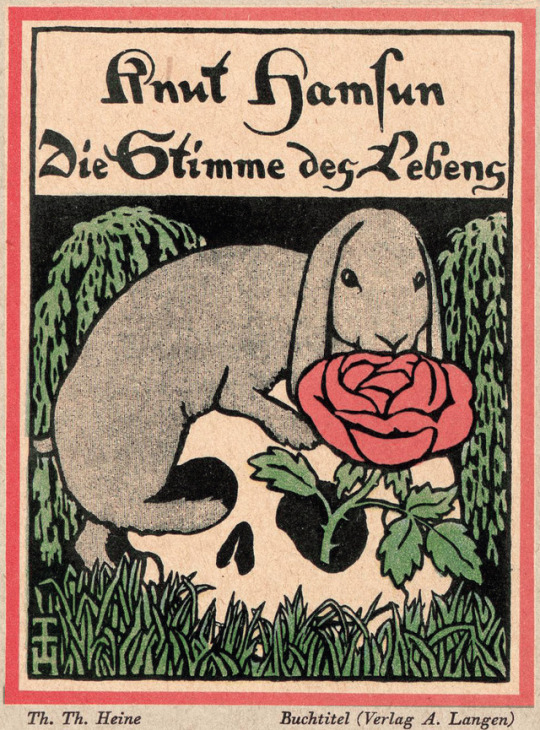
Thomas Theodor Heine (1867-1948), 'Buchtitel' (Book Title), ''Wieland'', #5, 1919-20
Knut Hamsun, “Die Stimme des Lebens” (The Voice of Life)
Source
#thomas theodor heine#german artist#german painter#buchtitel#book title#wieland#knut hamsun#die stimme des lebens#voice of life
469 notes
·
View notes
Text
Survival Magazin Workshop Band 2: Fallen, Werkzeuge und Hilfsmittel bauen, die wichtigsten Knoten und vieles mehr
Survival Magazin Workshop Band 2: Fallen, Werkzeuge und Hilfsmittel bauen, die wichtigsten Knoten und vieles mehr
Buchvorstellung von Thomas Thelen
Das Buch Survival Magazin Workshop Band 2 dreht sich vorrangig ums Fallenbauen und -stellen, um draußen in der Natur im Notfall (!) hochwertige Nahrung erbeuten zu können. Wie in Band 1 (Schwerpunkt: Feuer machen und unterhalten) entfalten die drei erfahrenen und renommierten Outdoor-Experten Oliver Lang, Armin Tima und Joe Vogel in dem gut 140 Seiten…

View On WordPress
#Armin Tima#Buchvorstellung#Jagdblog#Joe Vogel#Kochen#Nahrung selber herstellen#Nahrung selber herstellen: Step-by-Step-Anleitungen für draußen#Oliver Lang#Rezension#Survival Magazin#Survival Magazin Workshop Band 2#Survival Magazin Workshop Band 2: Feuer#Thomas Thelen#Wieland Verlag
0 notes
